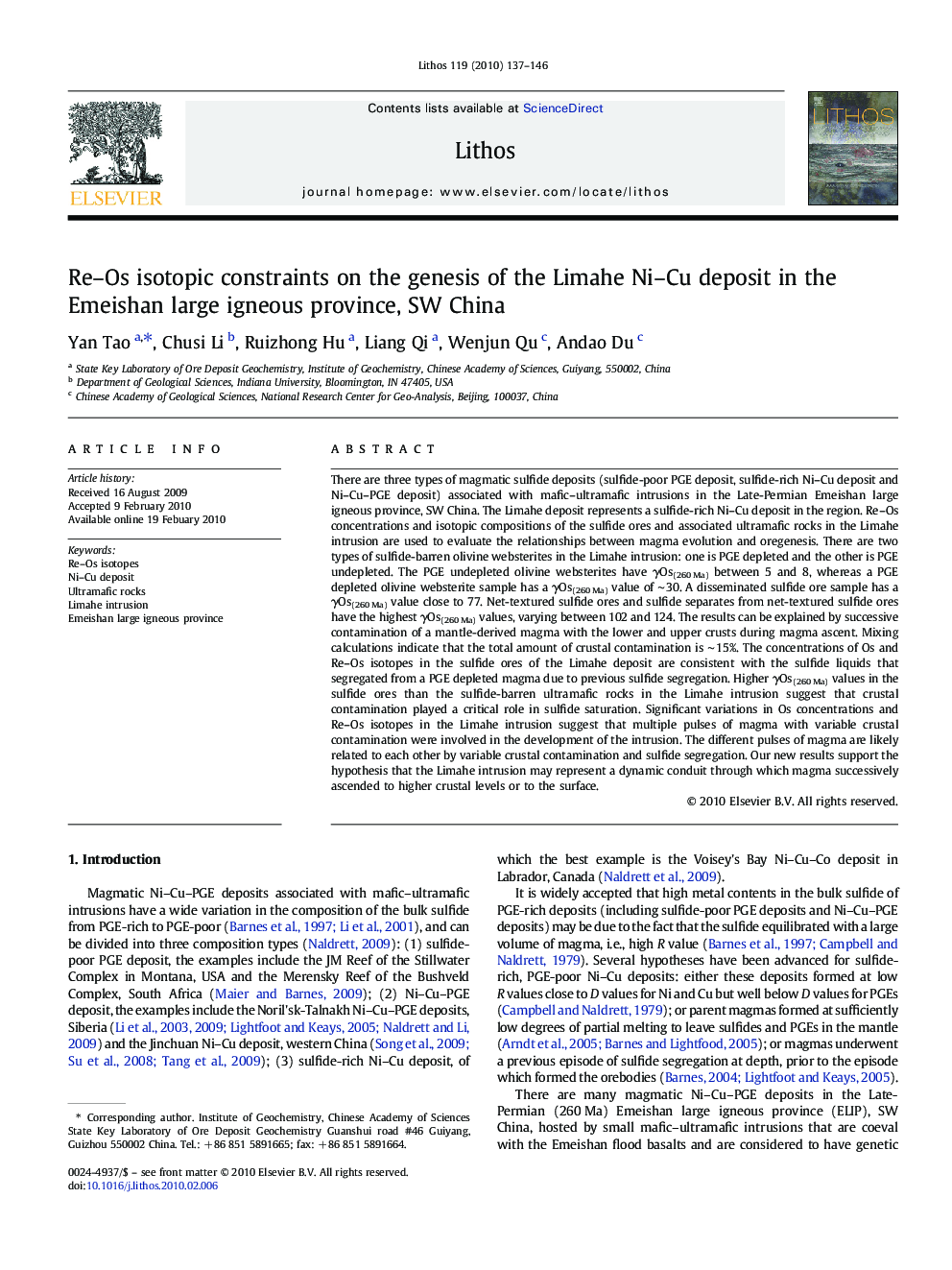| کد مقاله | کد نشریه | سال انتشار | مقاله انگلیسی | نسخه تمام متن |
|---|---|---|---|---|
| 4716916 | 1638729 | 2010 | 10 صفحه PDF | دانلود رایگان |

There are three types of magmatic sulfide deposits (sulfide-poor PGE deposit, sulfide-rich Ni–Cu deposit and Ni–Cu–PGE deposit) associated with mafic–ultramafic intrusions in the Late-Permian Emeishan large igneous province, SW China. The Limahe deposit represents a sulfide-rich Ni–Cu deposit in the region. Re–Os concentrations and isotopic compositions of the sulfide ores and associated ultramafic rocks in the Limahe intrusion are used to evaluate the relationships between magma evolution and oregenesis. There are two types of sulfide-barren olivine websterites in the Limahe intrusion: one is PGE depleted and the other is PGE undepleted. The PGE undepleted olivine websterites have γOs(260 Ma) between 5 and 8, whereas a PGE depleted olivine websterite sample has a γOs(260 Ma) value of ∼ 30. A disseminated sulfide ore sample has a γOs(260 Ma) value close to 77. Net-textured sulfide ores and sulfide separates from net-textured sulfide ores have the highest γOs(260 Ma) values, varying between 102 and 124. The results can be explained by successive contamination of a mantle-derived magma with the lower and upper crusts during magma ascent. Mixing calculations indicate that the total amount of crustal contamination is ∼ 15%. The concentrations of Os and Re–Os isotopes in the sulfide ores of the Limahe deposit are consistent with the sulfide liquids that segregated from a PGE depleted magma due to previous sulfide segregation. Higher γOs(260 Ma) values in the sulfide ores than the sulfide-barren ultramafic rocks in the Limahe intrusion suggest that crustal contamination played a critical role in sulfide saturation. Significant variations in Os concentrations and Re–Os isotopes in the Limahe intrusion suggest that multiple pulses of magma with variable crustal contamination were involved in the development of the intrusion. The different pulses of magma are likely related to each other by variable crustal contamination and sulfide segregation. Our new results support the hypothesis that the Limahe intrusion may represent a dynamic conduit through which magma successively ascended to higher crustal levels or to the surface.
Journal: Lithos - Volume 119, Issues 1–2, September 2010, Pages 137–146